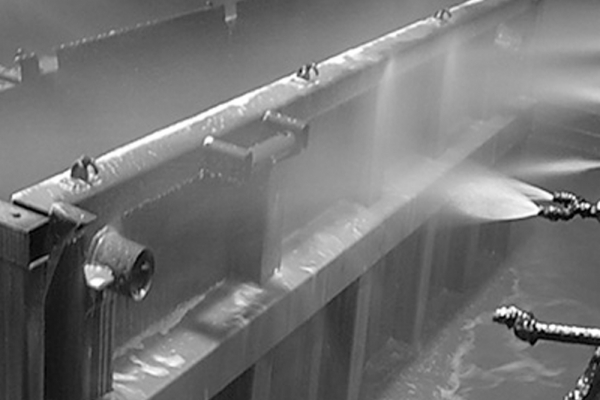Cataphoresis and powder system for Jolly - Light Range
CATAPHORESIS is the first step or the painting process, the second
step is the POWDER painting.
The CATAPHORESIS process is highly automated. It consists in progressive
immersion in tanks containing substances whose purpose
is to clean the material and make it suitable to receive the paint, so it
can cling tenaciously and grant the durability of the materials to the
aggression of different external agents.
The surface preparation is done through various stages of immersion
in tanks: degreasing, washing, activation, phosphating, passivation.
Stages that follow a schedule and practice validated by years of experience.
Once the surface is carefully prepared, the material is immersed in
the cataphoresis tank the time required to reach an average thickness
of 25 μm.
Due to cataphoresis, paint penetrates everywhere, even in the remote
corners, ensuring the maximum coverage and corrosion resistance.
To complete the cataphoresis cycle, the material goes through washing
operation.
Finally, the material arrives in the reticulation oven in order to dry the
paint and make it permanent.
The POWDER painting is made by special painting robots.
After the painting, the material arrives in the reticulation oven.
A control procedure measures and records the adequacy of the material
to standards set by the Quality System.
The final dry film thickness resulting from the CATAPHORESIS +
POWDER process is on average higher than 80 μm, and a saline mist
resistance of at least 400 hours.
Shotblasting and liquid painting process for Medium Range and Heavy Range
The paint is distributed by a centralized system that uses positivedisplacement
pumps, to ensure the correct parameters.
The bi-component painting-cycle is made by polyacrylic primer and
polyacrylic enamel.
The surface preparation is done by abrasive sandblasting operation
SA 2,5, blowing and deep cleaning of the material.
Once skinned and cleaned, the material is brought into a painting box
for the application of the polyacrylic primer.
Dried until complete reticulation, the dry film is 40-60 μm.
After the polyacrylic primer, it follows the application of the polyacrylic
enamel paint.
Once dried until complete reticulation, the dry film is 40-60 μm and the
final dry film of the complete LIQUID PAINTING process is 80-120 μm.
The resistance to saline mist is at least 350 hours. In some particular
cases, and upon specific request, the resistance can reach 1000
hours, with specific protective painting process.









